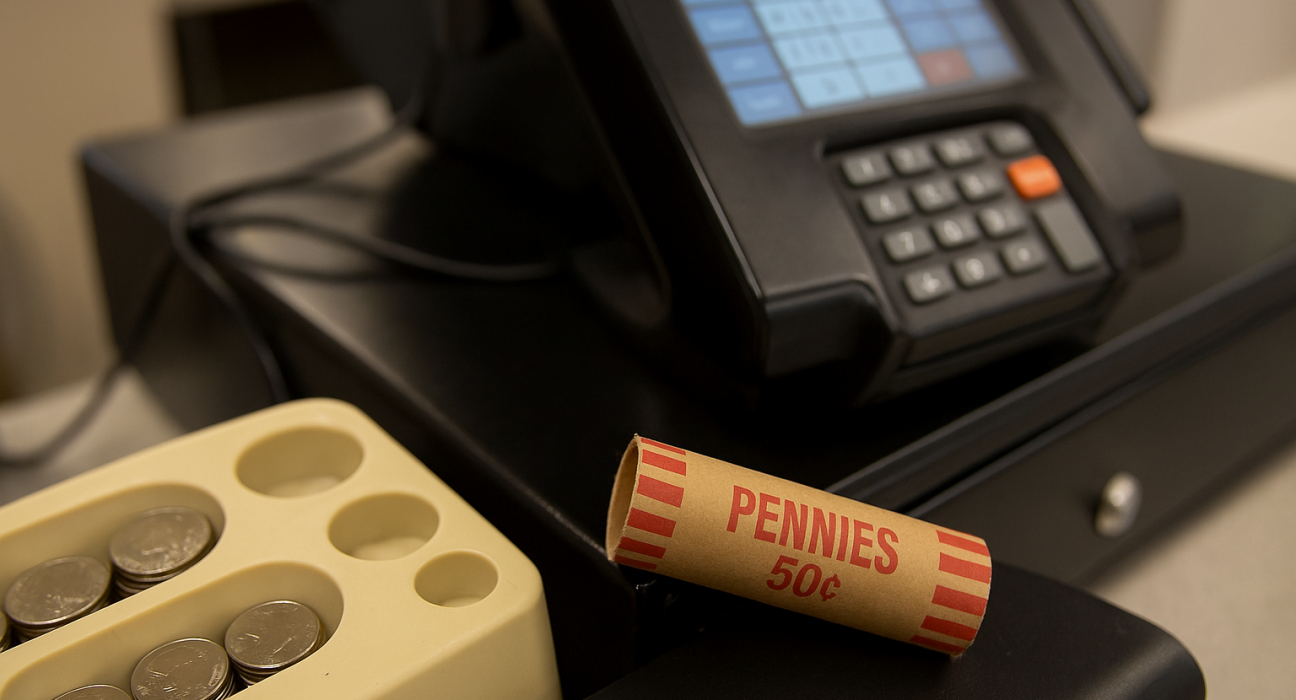The United States has officially ceased production of the one-cent coin (the penny), following a directive by Donald Trump earlier in 2025. The decision, announced by the Treasury, comes after production costs exceeded face value (each penny costing as much as 3.69 cents to make). The move is expected to save the government about US$56 million annually.
However, the decision has caused immediate operational issues for retailers and banks. Major convenience-store chains, grocery retailers and travel-stop operators report shortages of pennies, forcing them to ask customers for exact change, round cash transactions to the nearest nickel, or encourage cashless payments. According to Reuters, the lack of federal guidance on rounding policies has generated confusion and legal risk — especially in states with consumer-protection laws requiring exact change (such as California, New York and Illinois).
Retailers such as Kwik Trip, Sheetz and Kroger have posted notices citing penny shortages and asking customers to use exact cash or alternative payment methods. Some stores have simply begun rounding down cash transactions to avoid violation of state laws and to avoid negative customer reactions.
While the penny remains legal tender and the existing coins remain in circulation, analysts note this is the first major step toward eliminating the one-cent piece — a move several countries (e.g., Canada, Australia, New Zealand) have already made. Transitional issues, such as cash-transaction rounding and point-of-sale systems adaptation, are emerging.
Main Points
- The penny has been deemed cost-inefficient to produce; the U.S. Mint and Treasury estimate about 3.69 cents cost per penny.
- Production of the penny has ended (new coins will not be minted for circulation); the final order for blank planchets has been placed.
- Retailers across the U.S. are experiencing acute penny shortages, complicating cash transactions and change-making.
- The federal government has not issued consistent guidance on how retailers should legally handle rounding or change practices, creating legal and operational risk.
- The move is expected to save the government tens of millions annually, but raises questions about cash-based consumer transactions and fairness.
Pros & Cons
Pros
- Ending penny production removes a cost-inefficient process: producing a coin that costs more to make than its face value burdens taxpayers.
- It aligns the U.S. with other advanced economies that have eliminated very-low-value coins, simplifying cash transactions and reducing minting overhead.
- Encouraging digital or card payments may reduce costs for retailers and banks associated with handling coins.
Cons
- The abrupt shortage of pennies forces retailers and banks into operational limbo, with little regulatory guidance, risking customer frustration and legal exposure.
- Cash-dependent consumers (often older or lower income) may be disproportionately affected if rounding practices favour retailers.
- Without clear federal rounding rules, inconsistent state laws may result in a patchwork of policies — some cash customers may receive less favourable treatment.
- The symbolic value of the penny in pricing, charity collections and public perception may erode public trust if the transition appears un-managed.
Projections & What It Means for the Future
- Transaction rounding: We are likely to see widespread rounding of cash transactions to the nearest five cents, either up or down, depending on retailer policy and state law. Clear federal rules may emerge to standardise this.
- Cash ecosystem change: As coins become scarcer, more emphasis may shift to digital payments and cards, accelerating the decline of physical cash.
- Regulatory response: Congress may step in with legislation (such as the “Common Cents Act”) to formalise the ending of the penny, establish rounding rules and manage consumer-protection issues.
- Retail system impact: Retailers must invest in POS (point-of-sale) software updates, staff training and customer-communication strategies to handle rounding and cash-change policies smoothly.
- Public perception and inclusion: Policymakers will need to ensure the transition does not disadvantage cash-reliant populations, maintain transparency in rounding practices and safeguard trust in the currency system.
In sum: While ending penny production presents clear fiscal and logistical benefits, the transition poses real operational and equity challenges for retailers, banks and consumers — and demands careful policy, regulatory and communication management to avoid unintended consequences.
References
- Reuters: “US retailers left short-changed as penny production ends” — https://www.reuters.com/business/retail-consumer/us-retailers-left-short-changed-penny-production-ends-2025-11-01/ Reuters+1
- ABC News (via AP): “Banks and retailers run short on pennies as the US Mint stops making them,” Oct 30 2025. ABC News
- Associated Press: “Stop making cents: US Mint moves forward with plans to kill the penny,” May 22 2025. AP News+1
- Wikipedia: “Penny debate in the United States,” overview of discontinuation efforts. Wikipedia
